Spice Routes & Soulful Bites: A Spicy Safari Through African Cuisine
Africa — a continent bursting with vibrant cultures, rich traditions, and of course, an explosion of flavor in every bite. When we talk about Global Spice Traditions, it would be criminal to skip over the motherland. From the fiery berbere blends of Ethiopia to the aromatic dukkah crusted meats of Egypt, African cuisine is a spice-lover’s dream come true.
Table of Contents
- Introduction
- North Africa: The Land of Cumin, Coriander & Couscous
- West Africa: Bold, Earthy & Full of Heat
- East Africa: Coastal Curries & Coconut Cravings
- Southern Africa: Rustic Flavors & Smoky Notes
- Spice Profiles You Must Try
- Quick Tips for Cooking African-Inspired Dishes
- Conclusion
North Africa: The Land of Cumin, Coriander & Couscous
When you think North African food, think spices like cumin, coriander, cinnamon, paprika, and ras el hanout — the Beyoncé of spice blends. These flavors are woven into hearty stews, slow-cooked tagines, and fluffy couscous that practically hugs your taste buds.
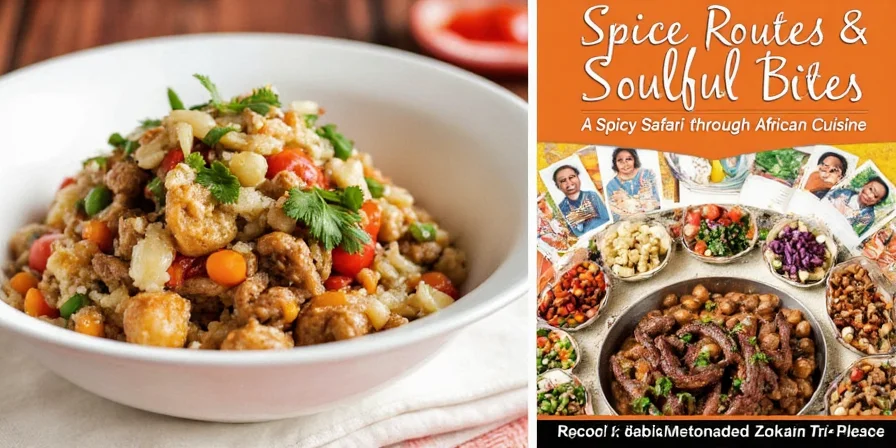
Image: A colorful Moroccan tagine simmering with spices and seasonal veggies.
Must-Try Dishes:
- Tagine: A slow-cooked stew named after the earthenware pot it’s cooked in. Use lamb or chicken and season heavily with ras el hanout.
- Couscous: Often served with roasted vegetables and harissa paste on the side for heat lovers.
- B’stilla: A sweet and savory pie made with layers of pastry, spiced meat, and almonds dusted with powdered sugar.
| Dish | Main Spices | Flavor Profile |
|---|---|---|
| Tagine | Cumin, Coriander, Ras el Hanout | Earthy, Fragrant, Complex |
| Couscous | Paprika, Turmeric, Cayenne | Mildly Spicy, Nutty, Colorful |
| B’stilla | Cinnamon, Allspice, Sugar | Sweet-Savory, Nutty, Elegant |
West Africa: Bold, Earthy & Full of Heat
West African cuisine isn’t here to play — it’s bold, spicy, and packed with umami-rich ingredients. Think chili-forward dishes, nutty pastes, and deep flavors from fermented condiments. Spices like dried chilies, ginger, and thyme dominate the pantry, while palm oil gives everything that signature red glow.

Image: Jollof rice — West Africa’s most debated dish (and favorite).
Must-Try Dishes:
- Jollof Rice: Cooked in tomatoes, onions, and a blend of local spices including thyme and alligator pepper. It’s the unofficial national dish of rivalry among Ghana, Nigeria, and Senegal.
- Egusi Soup: A thick soup made with melon seeds (or groundnuts), leafy greens, and loads of Scotch bonnet peppers.
- Groundnut Stew: Rich, nutty, and perfect for dunking fufu or eating with rice.
| Dish | Main Spices | Flavor Profile |
|---|---|---|
| Jollof Rice | Thyme, Scotch Bonnet, Bay Leaf | Spicy, Tangy, Umami |
| Egusi Soup | Scotch Bonnet, Uziza Leaves, Ground Peanuts | Spicy, Earthy, Creamy |
| Groundnut Stew | Paprika, Ginger, Chili Powder | Nutty, Mildly Spicy, Comforting |
East Africa: Coastal Curries & Coconut Cravings
Thanks to centuries of trade with India, Arabia, and Persia, East African cuisine has developed a flair for the exotic. Think coconut milk curries, cardamom-laced rice, and fragrant pilafs. This is where Swahili culture meets spice bazaars in a delicious dance of flavor.
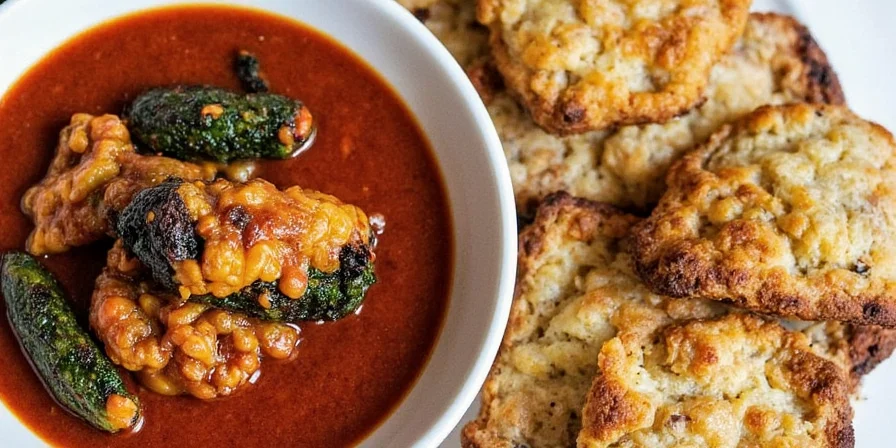
Image: A creamy coconut curry served with pilau rice and fresh herbs.
Must-Try Dishes:
- Pilau: An aromatic rice dish cooked with cloves, cardamom, cinnamon, and turmeric.
- Samaki wa Kupaka: Fish marinated in coconut and spices, then steamed in banana leaves.
- Chapati: Not your average flatbread — soft, flaky, and perfect for soaking up sauces.
| Dish | Main Spices | Flavor Profile |
|---|---|---|
| Pilau | Cloves, Cardamom, Cinnamon | Fragrant, Warm, Balanced |
| Samaki wa Kupaka | Coconut Milk, Curry Powder, Garlic | Rich, Tropical, Aromatic |
| Chapati | Cardamom, Salt, Oil | Soft, Buttery, Layered |
Southern Africa: Rustic Flavors & Smoky Notes
In Southern Africa, food is a party. Whether it’s grilled over open flames, fermented in clay pots, or braised until fall-apart tender, this region leans into simplicity with maximum impact. Smoked paprika, chili powder, and dried herbs bring the flavor without overpowering it.

Image: Braai day! Traditional South African barbecue featuring boerewors and pap.
Must-Try Dishes:
- Braai (Barbecue): Grilled meats slathered in peri-peri sauce or basted with garlic butter.
- Pap: A maize porridge often eaten with stew (sosaties) or chakalaka, a spicy vegetable relish.
- Biltong: The original beef jerky, seasoned with vinegar, coriander, and pepper.
| Dish | Main Spices | Flavor Profile |
|---|---|---|
| Braai | Peri-Peri, Garlic, Paprika | Smoky, Spicy, Charred |
| Pap | Coriander, Salt, Chili | Neutral, Mildly Spicy, Versatile |
| Biltong | Vinegar, Pepper, Coriander Seeds | Salty, Tangy, Intense |
Spice Profiles You Must Try
If you’re serious about exploring Global Spice Traditions, here are some must-have spices from across Africa:
- Ras el Hanout: The ultimate North African spice mix — warm, floral, and deeply aromatic.
- Berbere: Ethiopia’s fiery blend of chili, garlic, ginger, and fenugreek. Perfect for doro wat (chicken stew).
- Grains of Paradise: A peppery seed native to West Africa, used as a substitute for black pepper.
- Alligator Pepper: Found in Nigerian soups, it’s spicy, earthy, and slightly citrusy.
- Uziza Leaves: Used like bay leaves in West African soups — aromatic and pungent.
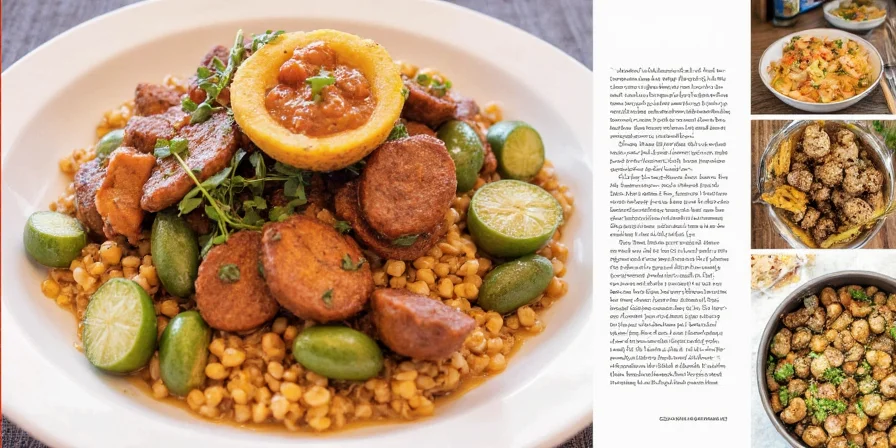
Image: A vibrant collection of traditional African spices ready to elevate your cooking game.
Quick Tips for Cooking African-Inspired Dishes
You don’t need a passport to enjoy these flavors — just a stocked pantry and a curious palate. Here are some pro tips to get started:
- Build Layers: Start with aromatics (onions, garlic, ginger), then toast your spices before adding liquids.
- Don’t Rush the Spices: Toast dry spices in oil or fat first to unlock their aroma. Just don’t burn them!
- Balance Is Key: Many African dishes balance heat with sweetness (like cinnamon in tagines) or creaminess (like coconut in curries).
- Use Fresh Chilies: For authentic heat, opt for Scotch bonnet or habanero instead of generic hot sauce.
- Experiment: Don’t be afraid to mix global influences — many African cuisines evolved through fusion anyway!
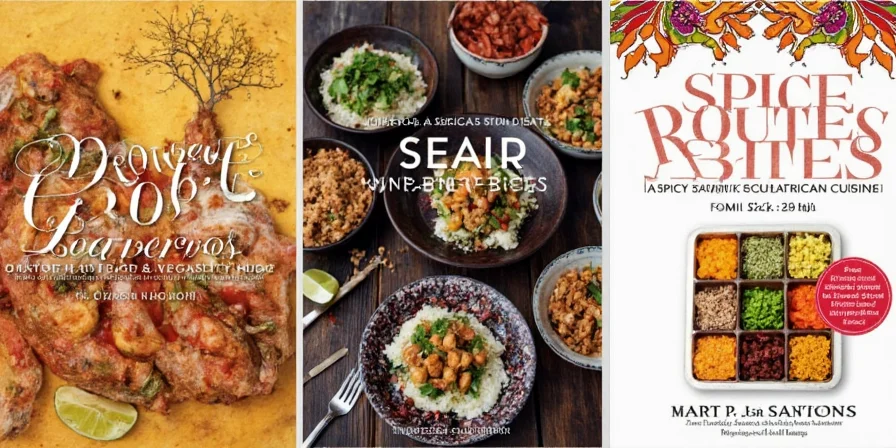
Image: Grinding spices by hand adds depth and authenticity to your meals.
Conclusion
From the deserts of the north to the coasts of the east, the forests of the west to the savannas of the south, African cuisine is a kaleidoscope of flavor, tradition, and spice. Whether you're grilling up a storm at a braai, simmering a spicy jollof, or toasting ras el hanout for a tagine, each bite tells a story rooted in history, culture, and community.
So, next time you ask yourself, “What food is in Africa?” remember — it’s not one answer, but a thousand delicious ones. Now go forth and spice up your life, one plate at a time!
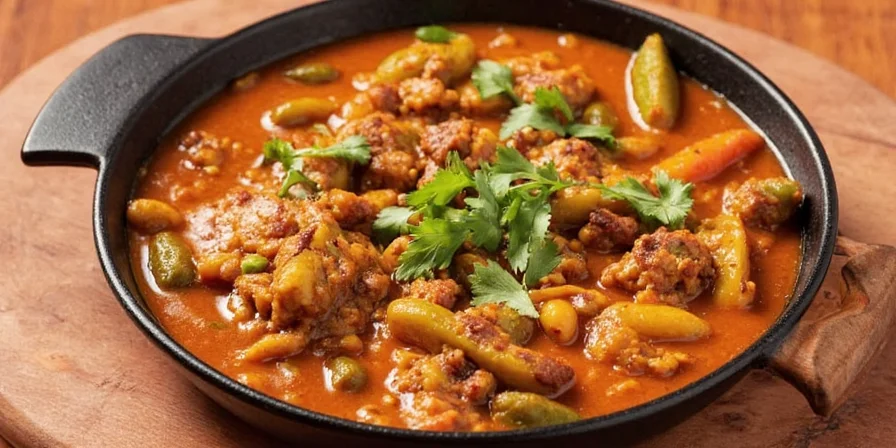
Image: A table filled with dishes from across the continent — a true celebration of African cuisine.

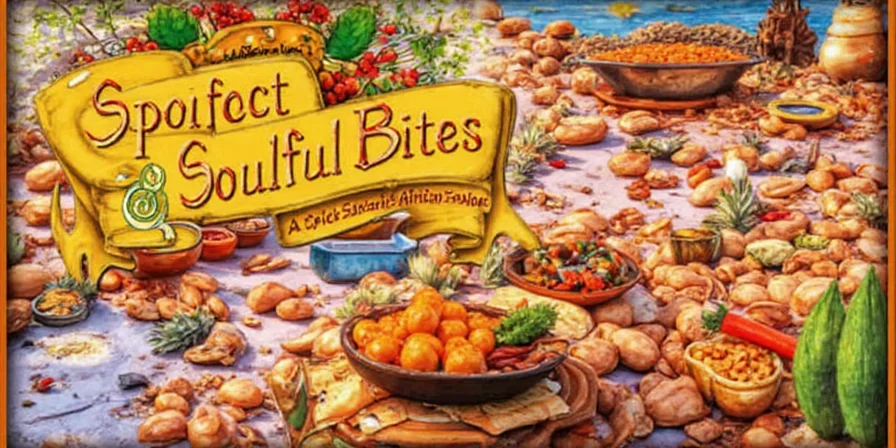









 浙公网安备
33010002000092号
浙公网安备
33010002000092号 浙B2-20120091-4
浙B2-20120091-4